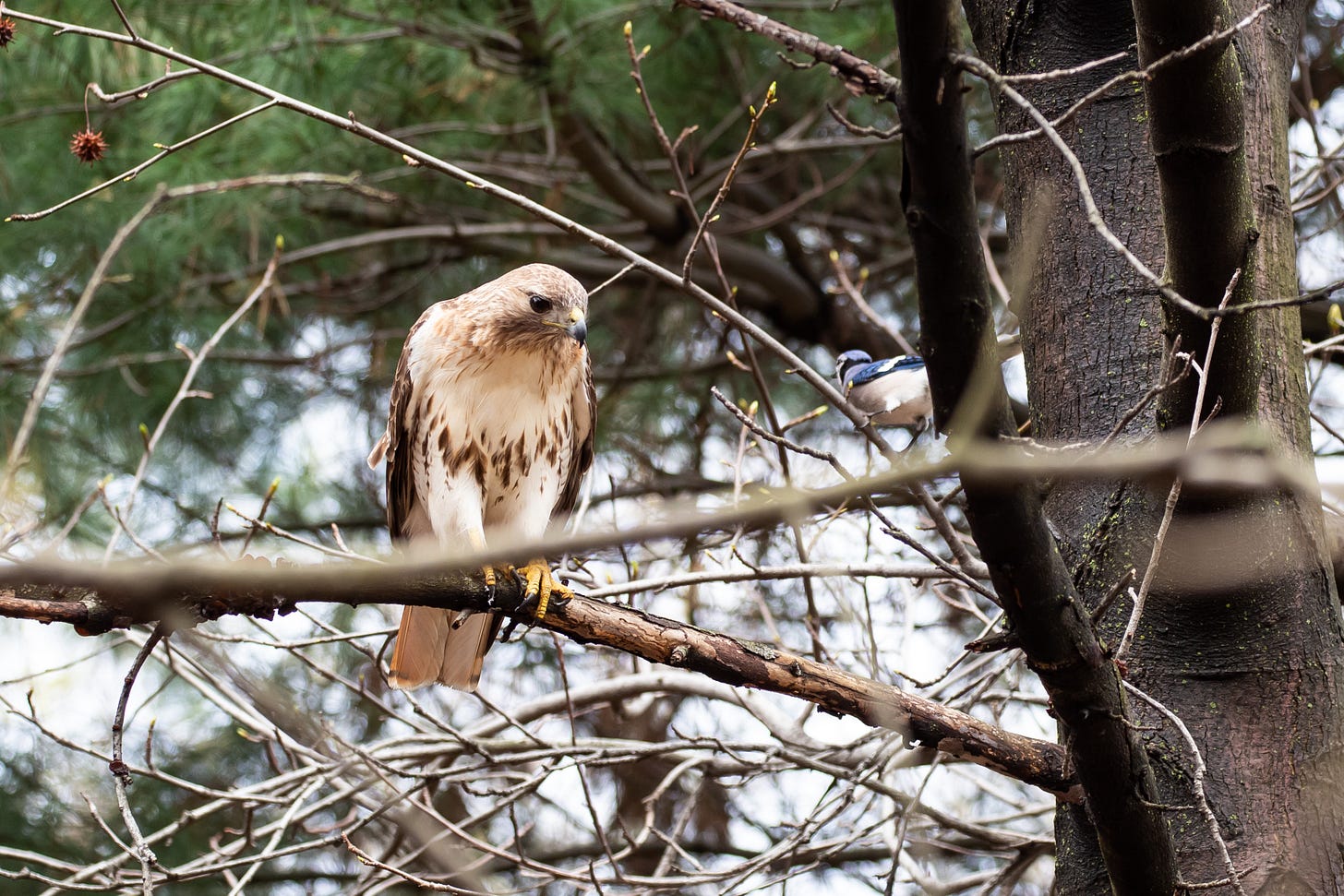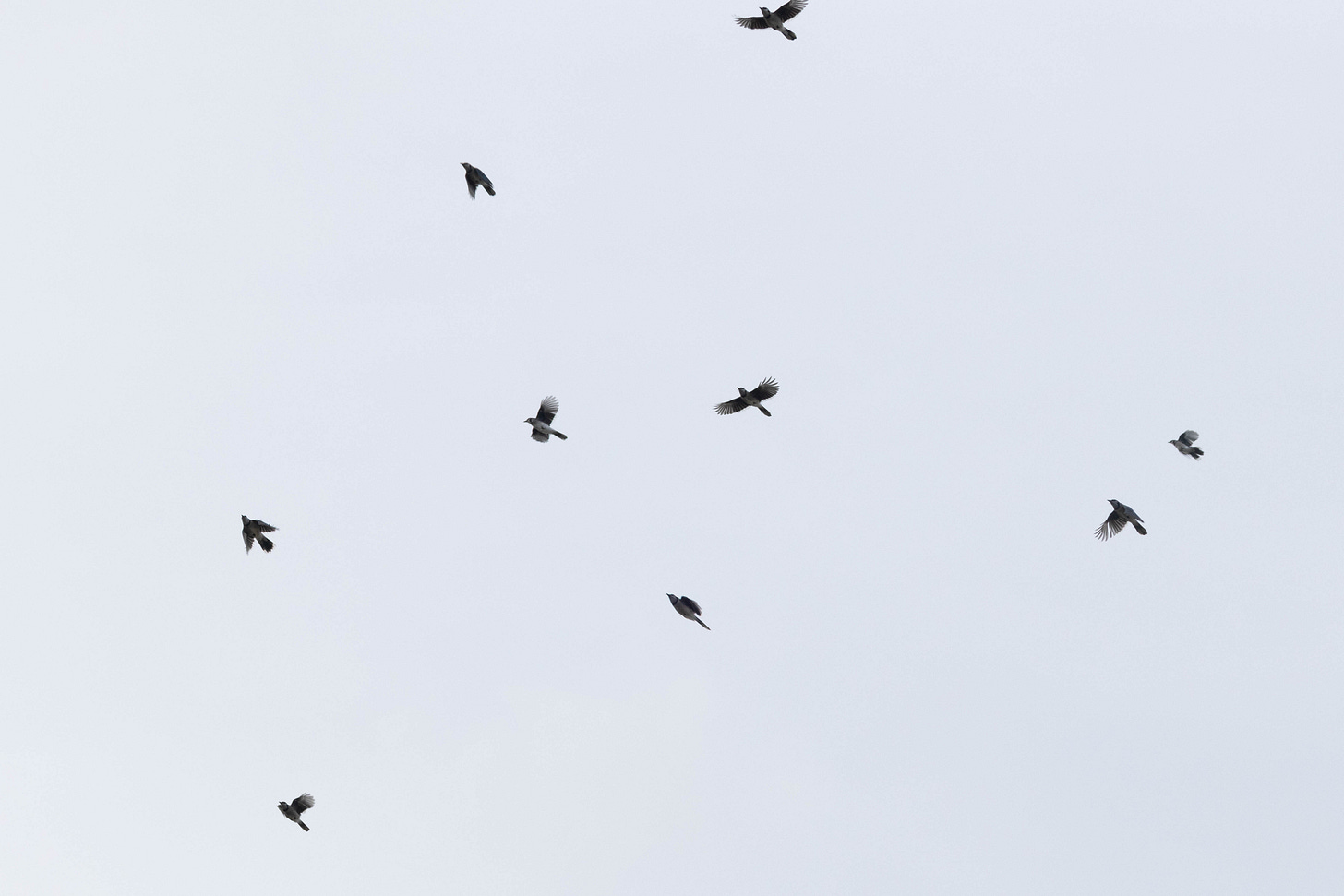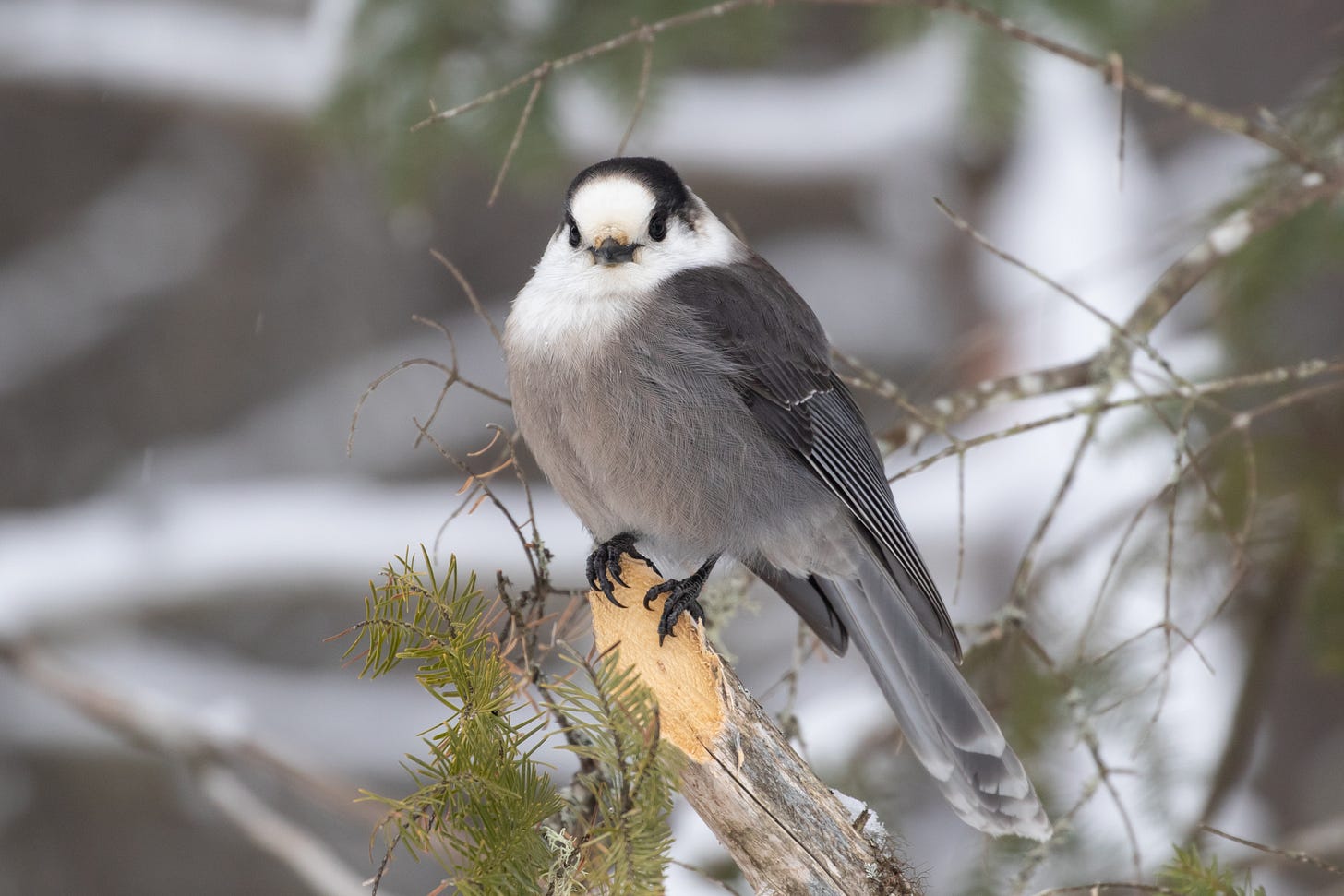the mysterious flight of the blue jays
prepare to be scolded
a strange avian phenomenon is currently playing out over nyc skies: blue jays are forming massive flocks to undertake their semi-regular, poorly-understood trip southward. red-tailed hawks beware.
you see, people think of blue jays a little differently than they do their average beautiful summertime songbirds who depart each fall, because blue jays are goofy monster birds. they bully the other birds at bird feeders, they attack people who venture too close to their nests, and they relentlessly pester birds of prey with their raucous “jay” calls. so if you live someplace for a while and pay attention to the animals, you start to think of blue jays as “your” blue jays who stick around all year, given their personalities. it may come as a surprise, then, to know that your blue jays might be migrating to or from someplace else.
blue jay migration is poorly understood, according to cornell’s birds of the world encyclopedia. some years, blue jays might spend the whole winter in your backyard, a park, or the forest as individuals or small groups. but some years, like this year, you’ll see them flying overhead by the dozen or hundred on their way south. last week, my friend max and i saw nearly 300 fly by the rockaway peninsula; birder spencer hildie watched 1370 of them fly by coney island creek park in just a few hours. and not to brag, but i actually have the high count record of blue jays for central park in the ebird database, 700 birds i counted back in september 2018
i always think of blue jays as scheming little villains, so who knows what kind of chaos a flock of hundreds can cause.
clearly, blue jays aren’t like other migratory songbirds where the whole population moves between summer and winter sites each year. many individual jays spend their whole lives in one part of their range, be it the canadian boreal forest or the gulf coast. estimates say only 20% or less of the population actually migrates. in other stereotypically nonmigratory species spotted on the move, young birds dispersing to find new habitat make up the majority of the movers, but that doesn’t seem to be the case for blue jays—the flock comprise birds of different ages. individual adult birds will choose to migrate some years and not other years.
there are some patterns that researchers have gleaned from these migrations. east of the great plains, birds seem to move along a northeast-southwest axis, often along the atlantic coast or appalachian mountains. in the great plains and west, movement seems to go from northwest to southeast. the movements happen in late september to early october, almost solely during the day. and the timing is only sort of aligned with food — most blue jays eat or hide thousands of nuts and acorns each year, but these migrating birds seem to arrive at their wintering sites after the peak of the seed crop when supplies start running out. (all the facts in the above two paragraphs are from birds of the world)
even so, there’s suspicion that this movement has something to do with mast crops, where mast refers to tree fruits like beech nuts and acorns. lots of animals rely on deciduous mast, like gray squirrels and blue jays. but if these animals eat too much of the mast, then the trees can’t reproduce. so, ecologists hypothesize that in some years, all of the trees in the forest synchronize to produce so much mast that some of the seeds can escape consumption by seed eaters. all that food causes those animals’ populations to balloon, so the trees produce few or no seeds the following year to try and limit those populations. but blue jays have wings, so birds in areas with little to no mast might choose to migrate.
ultimately, that’s just a hypothesis. blue jay movement does correlate with mast abundance on the broadest scale, according to birds of the world, but studies zooming into the regional scale haven’t found strong evidence of it. even still, the correlation is strong enough that the finch research network includes blue jays as part of its annual forecast of birds moving south in search of food—also known as irruptive birds. my favorite bird is an irruptive northern finch (and i volunteer for the finch research network) so you'll certainly hear more about the forecast and these irruptive visitors soon.
it’s cool to me that even our most well-known birds carry these mysteries, and it’s even cooler to see a huge flock of a bird i usually only see as an individual or in small groups. given its coastal location and lack of greenspace, new york city concentrates migrating winged creatures and is therefore a really good place to see this phenomenon in action.
postscript
according to the internet, a flock of blue jays is called a band, party, or scold. do with that knowledge what you will.
also (and the following is all anecdotal) it’s not all love for the blue jay, especially in new york’s adirondack mountains. the area host a small population of another jay, called the canada jay, in its coniferous forest. canada jays are charming little fluffballs who have no fear of humans and will land on your head or climb into your backpack if they’re interested in the snacks you have. one of my friends up there has noticed a decrease in the in the canada jay population, and she thinks that blue jays (and indirectly, humans) are the culprit. climate change combined with increased human disturbance seem to be making the area more welcoming to blue jays, who aggressively outcompete the canada jays.
which is sad. i would hate to lose ny’s population of these fluffy lads:
but yeah, not really the blue jays’ fault.





